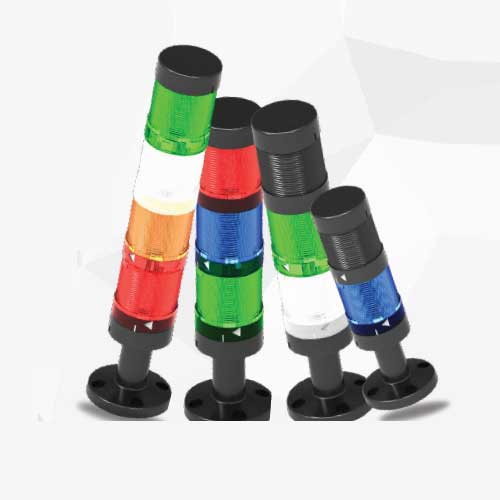Schedule a Call Back
Industrial Safety & Security In a State of Neglect
 Technical Articles
Technical Articles- Jan 30,12
 In early December 2011, a major fire broke out at a Kolkata hospital and devoured close to 100 persons, mostly patients and relatives, but also some members of the hospital staff. Given the crowded nature of most Indian cities, and the delay in calling the fire brigade in the first place, professional help reached too late and precious lives were lost. But it is important to note that there were prior warning signs and indications of this tragedy waiting to happen. A no objection certificate (NOC) was issued to the hospital a few months prior to the incident with full knowledge that it did not meet the fire preparedness requirements. A three months notice period was served which the hospital ignored, and the concerned department chose to do nothing. Another shocking revelation was that a security guard who had called the fire department after a minor fire earlier that year was reprimanded and suspended by authorities for not alerting his supervisors first. Another serious fact was storage of inflammable materials in the basement, where the fire broke out before spreading to the rest of the building, helped no doubt by the length of cables and ducting for air conditioning. The final act of negligence however was the staff reportedly wasting valuable time trying to deal with the fire on their own instead of immediately calling the fire department.
In early December 2011, a major fire broke out at a Kolkata hospital and devoured close to 100 persons, mostly patients and relatives, but also some members of the hospital staff. Given the crowded nature of most Indian cities, and the delay in calling the fire brigade in the first place, professional help reached too late and precious lives were lost. But it is important to note that there were prior warning signs and indications of this tragedy waiting to happen. A no objection certificate (NOC) was issued to the hospital a few months prior to the incident with full knowledge that it did not meet the fire preparedness requirements. A three months notice period was served which the hospital ignored, and the concerned department chose to do nothing. Another shocking revelation was that a security guard who had called the fire department after a minor fire earlier that year was reprimanded and suspended by authorities for not alerting his supervisors first. Another serious fact was storage of inflammable materials in the basement, where the fire broke out before spreading to the rest of the building, helped no doubt by the length of cables and ducting for air conditioning. The final act of negligence however was the staff reportedly wasting valuable time trying to deal with the fire on their own instead of immediately calling the fire department.
 The incident reveals the sorry state of negligence in general, and the general apathy in particular that we the citizens of this country have cultivated regarding our own safety and security. It is literally a case of being penny wise and pound foolish, saving a relatively small amount of money and paying with life. That this is not an isolated case is proved by an audit conducted after the Kolkata hospital blaze in the city of Mumbai, touted as India's commercial capital. Here the fire department has found that 40 hospitals in this premium city lack basic fire safety equipment. Though 75% of the errant hospitals, are private, the department found four government and six BMC hospitals violating fire safety norms. The report notes that apart from some major deficiencies, most hospitals have been found using LPG cylinders upstairs for canteen and laboratory purposes. While the fire safety norms mandate that there should be adequate free space, in its inspection, the department found corridors blocked with stretchers and other equipments lying in the carriageway. An essential fire safety item - fire extinguishers and other fire fighting installations - were not found in most hospitals. Signs, which could be handy during an emergency, were found not to be displayed properly. According to the fire department, most high-rise hospitals have not appointed fire safety officers, who play an essential role in monitoring and maintaining fire safety equipment. If this is the case of hospitals, which are by definition meant to save lives, the less said the better about working conditions in the overwhelming majority of the industrial units.
The incident reveals the sorry state of negligence in general, and the general apathy in particular that we the citizens of this country have cultivated regarding our own safety and security. It is literally a case of being penny wise and pound foolish, saving a relatively small amount of money and paying with life. That this is not an isolated case is proved by an audit conducted after the Kolkata hospital blaze in the city of Mumbai, touted as India's commercial capital. Here the fire department has found that 40 hospitals in this premium city lack basic fire safety equipment. Though 75% of the errant hospitals, are private, the department found four government and six BMC hospitals violating fire safety norms. The report notes that apart from some major deficiencies, most hospitals have been found using LPG cylinders upstairs for canteen and laboratory purposes. While the fire safety norms mandate that there should be adequate free space, in its inspection, the department found corridors blocked with stretchers and other equipments lying in the carriageway. An essential fire safety item - fire extinguishers and other fire fighting installations - were not found in most hospitals. Signs, which could be handy during an emergency, were found not to be displayed properly. According to the fire department, most high-rise hospitals have not appointed fire safety officers, who play an essential role in monitoring and maintaining fire safety equipment. If this is the case of hospitals, which are by definition meant to save lives, the less said the better about working conditions in the overwhelming majority of the industrial units.
 According to a study commissioned by an NGO, India has had legislation on occupational safety and health for 50 years. But regulatory authorities are limited to 1,400 safety officers, 1,154 factory inspectors, and 27 medical inspectors. These numbers are grossly inadequate even for the inspection of formal units that only employ about 10% of India's total workforce (around 26 million), let alone the millions who work in the informal sector with absolutely no safeguards, the study points out. Industrial accidents are not a new phenomenon. At the dawn of industrial revolution, England had more than its share of horror stories, so does the US. But along with progress came awareness, and progressive safety legislations that made it impossible for mandatory norms to be ignored. But more than the rules and regulations, it is awareness and the sense of responsibility that can actually work in preventing such disasters. The Inspector Raj for factories only provides avenues for corruption to unscrupulous officers who are themselves mostly ignorant of the subject, but well versed in the letter of the law rather than the spirit. So buckets filled with water and sand are at times insisted upon as the mandatory requirement even in modern office complexes equipped with state-of-the-art smoke and fire detector and sprinkler systems. Ironically, such incidents of gross mismanagement are happening at a time when technology has made complex and sophisticated systems more affordable. The humble and unwieldy and at one time ubiquitous cylindrical red painted metal fire extinguisher first underwent a minor revolution thanks to the handy version launched by Cease Fire several years ago. It has since disappeared in more advanced buildings, to reappear in a different avatar, blending neatly in the general ceiling d?cor in state-of-the-art sprinkler systems triggered by sensors and smoke detectors. More user friendly versions of the fire extinguisher now dot the shopfloor, which itself has undergone a metamorphoses from the once grimy and dank sweatshops to well ventilated swanky buildings with floors coated with anti slipping paints marked neatly with emergency walkways clear of any obstacles, a modern annunciator at hand to warn of any emergency situation that calls for quick evacuation.
According to a study commissioned by an NGO, India has had legislation on occupational safety and health for 50 years. But regulatory authorities are limited to 1,400 safety officers, 1,154 factory inspectors, and 27 medical inspectors. These numbers are grossly inadequate even for the inspection of formal units that only employ about 10% of India's total workforce (around 26 million), let alone the millions who work in the informal sector with absolutely no safeguards, the study points out. Industrial accidents are not a new phenomenon. At the dawn of industrial revolution, England had more than its share of horror stories, so does the US. But along with progress came awareness, and progressive safety legislations that made it impossible for mandatory norms to be ignored. But more than the rules and regulations, it is awareness and the sense of responsibility that can actually work in preventing such disasters. The Inspector Raj for factories only provides avenues for corruption to unscrupulous officers who are themselves mostly ignorant of the subject, but well versed in the letter of the law rather than the spirit. So buckets filled with water and sand are at times insisted upon as the mandatory requirement even in modern office complexes equipped with state-of-the-art smoke and fire detector and sprinkler systems. Ironically, such incidents of gross mismanagement are happening at a time when technology has made complex and sophisticated systems more affordable. The humble and unwieldy and at one time ubiquitous cylindrical red painted metal fire extinguisher first underwent a minor revolution thanks to the handy version launched by Cease Fire several years ago. It has since disappeared in more advanced buildings, to reappear in a different avatar, blending neatly in the general ceiling d?cor in state-of-the-art sprinkler systems triggered by sensors and smoke detectors. More user friendly versions of the fire extinguisher now dot the shopfloor, which itself has undergone a metamorphoses from the once grimy and dank sweatshops to well ventilated swanky buildings with floors coated with anti slipping paints marked neatly with emergency walkways clear of any obstacles, a modern annunciator at hand to warn of any emergency situation that calls for quick evacuation.
From multinational corporations like Honeywell Corporation, Bosch Security Schneider Electric to homegrown domestic majors like Godrej Security Systems and Zicom, to other small and unorganized sector players, end-to-end and completely integrated safety and security solutions today are widely available across the country. Surveillance cameras and equipment, once the preserve of government agencies and elite businesses, are today commonplace, found in malls and multiplexes and sundry establishments including corner shops masquerading as supermarkets.
Commercial buildings today flaunt fully integrated access control and security systems, also linked with climate and lighting control systems to make the buildings 'green' and environment friendly. This is the playing field for the big boys of the market. With wide ranging building management integration and interfaces at all levels, Schneider Electric offers some of the most comprehensive security solutions on the market. Thanks to scalable architecture, and secure yet open networks, the system can be cost effectively expanded as needed. The scalable Schneider Electric Security Domain architecture permits a simple one- or two-door access control system to be expanded to an enterprise-wide, multi-site integrated security management system with millions of doors, cameras, fire alarm points and intrusion detection sensors.
But buildings alone are not where security is required. With growing challenges and threats of mass destruction, public places and giant industrial complexes like refineries and ports also call for appropriate security measures. For challenging surveillance applications, the EX65 explosion protected camera by Bosch holds internationally recognised, explosion protected certifications, to guarantee safe and reliable surveillance at oil and gas, chemical, petrochemical and other hazardous sites. Equipped with powerful Dinion 2X Day/Night technology, the EX65 maximises image quality and usability to ensure accurate video verification, faster response times and safer facilities. An optional explosion protected infrared illuminator ensures round-the-clock safety and security, whilst reducing costs by eliminating the need for power hungry high-voltage lighting.
Public places like markets, bus and railway stations, popular tourist attractions and the more famous places of worship also need modern security equipment. A recent report in a leading newspaper highlighted how the Saibaba Sansthan Trust in Shirdi, has installed a state-of-the-art CCTV camera network, fortified with face recognition software, on the temple premises to keep crooks at bay. And the Rs 5-crore system has already been yielding results. According to this report, Pramod Verma of Noida-based Vantage Integrated Security Solutions that has installed CCTVs at Shirdi said, "It's a unique face recognition software to nab culprits. We had several rounds of meetings with local police officers to obtain information on and photographs of repeat offenders, bag lifters, chain snatchers and pickpockets. All the photographs have been fed into the software. As a result, the moment a person whose photograph and details have been fed comes in front of a CCTV camera, a continuous beep goes off and an alarm is raised in the monitoring room. Of course, the culprit is unaware of the beep system and alarm." Even in places of worship, it appears that more than divine will, it is technology that obviously works. It is reliable, available; and cost effective in each application. However, it requires a human will, which is unfortunately lacking as seen in the opening paragraph of this story.
Related Products

Industrial Tower Lights
Esbee
Electrotech LLP offers a wide range of industrial tower lights.

Chain Saw Files Hand
PFERD offers a wide range of chain saw files hand.

Single Pole, Non-directional, Idmt O/c or E/f Relay
JVS Electronics Pvt Ltd offers a wide range of Single Pole, Non-Directional, IDMT O/C Or E/F Relay JRC 051P/JRC 051













